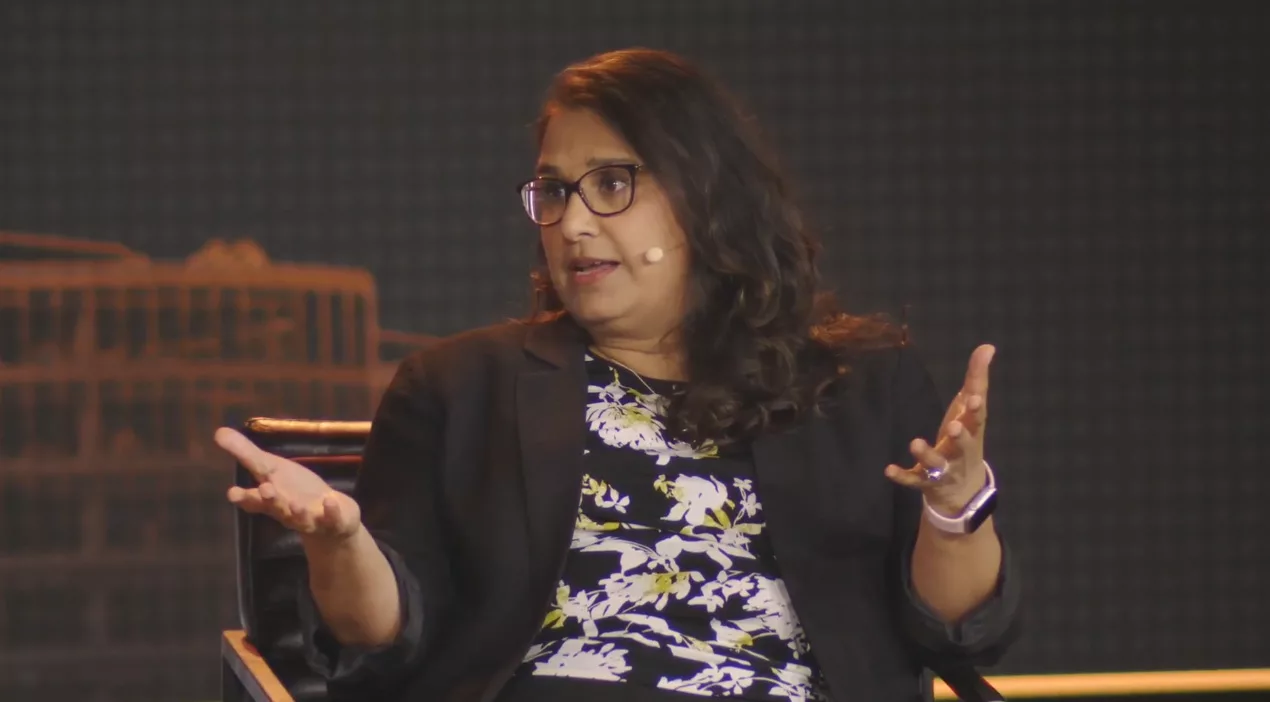London Blockchain Conference: What is big tech’s role in the wider use of blockchain?
[gpt3]rewrite
Just before lunch on Day 1 of the London Blockchain Conference (LBC), attendees were treated to an insider’s insight into how and when blockchain technology might be adopted by the masses, and the role big tech will play in this process.
The issues discussed at the pre-lunch panel were the mainstream integration of blockchain technology and how major tech plans to allow blockchain solutions to be rolled out on their platforms.
Market leaders such as Apple (NASDAQ: AAPL ), Google (NASDAQ: GOOGL ), Meta (NASDAQ: META ) and Microsoft (NASDAQ: MSFT ) are likely to be the deciders when it comes to mass adoption of blockchain technology, and in the grand hall of the QEII conference center four industry insiders discussed the implication of this for blockchain, big tech and general users.

“Our thinking is that we need to bring the next 1-2 billion people into the Web3 space,” said Alex Matsuo, a fitting panelist to talk about big tech’s role in blockchain adoption from his position as EMEA Web3 developer at the technology giant Amazon Web services.
Matsuo went on to explain how Amazon is approaching this onboarding process, talking to all kinds of digital asset players from “two mates in a garage creating the next unicorn” to companies at the top of the market, to get a picture of how this mass adoption could is achieved.
Co-speaker Joshua Henslee, writer and technical editor at CoinGeek, sees the change as coming from the bottom up, rather than from digital giants like Amazon.
“The challenge is these companies are big, so they’re slow … it’s not as fast as the individual, so in the short term, individuals are going to vote with the chain they’re using,” Henslee said. He went on to suggest that it is the grassroots movement that will lead the way to blockchain’s wider adoption, with big tech catching up after it gets a “case of FOMO”.
Looking around at the diverse and delighted faces filling the chairs at the LBC business stage, it’s easy to see how Henslee could be right about the grassroots leading the way.

The assembled entrepreneurs, tech industry investors and various consumers listening to the panel gave their loudest reaction when the speakers were asked what big companies are doing wrong when trying to integrate blockchain technology – a pause was necessary to let the laughter subside.
In response to the question, Marcin Dyba, co-founder and CEO of 4Chain, a platform offering advice and development of turnkey solutions using Web3 technologies, suggested that more time is needed for big tech to adopt Web3.
“We’re still at an early stage, the most popular use cases right now are related to tokenization,” said Dyba, who advocated a sensible solution-driven approach to adoption. “It’s important to look at the problem and see if blockchain is the solution, not just integrate blockchain for the sake of it.”
The panel’s fourth speaker, CEO of financial technology company Qenta, Nirali Shah, emphasized that “thinking about regulation and licensing is important before we think about integration.” This is particularly important in the context of large multinational companies looking to integrate blockchain technology without becoming embroiled in the kind of regulatory disputes the digital asset industry has become synonymous with of late.

She largely agreed with Dyba about a solution-based approach to integration, saying that “Blockchain itself is not the panacea,” and should be used where needed first, before being used haphazardly.
Tokenization of Big Tech
Shah also talked about “embracing a shift towards a token-based economy,” which fellow panelist Henslee wholeheartedly agreed with:
“Still, after 14 years, the dominant use case is tokenization and NFTs, this is what the market wants … companies need to look at what users are doing and give them what they want.”
Henslee suggested that new big tech projects focused on giving users what they want would be the best way to create a ground wave of support for the adoption of blockchain technology. He offered the folksy hypothesis that Coca-Cola makes NFTs out of glass bottles, an example he admitted was “stupid” but one that illustrates an attempt to at least give users what they – for the moment – want.

Total agreement is never desirable for lively panel discussions, and fortunately Dyba had a different view on the way forward. He suggested that instead of relying on new projects, “we need more time to get the best out of existing projects, to get them right first.” This will strengthen faith in the market and encourage larger players to get involved when they see well-executed use cases in action.
When the discussion returned to big tech’s slow approach to adoption, Amazon’s Matsuo suggested that “at least we should give them credit for trying. We need to stop thinking about Web2 vs Web3, we need to agree on a vision and go there together” – a sentiment that received many affirmative nods from fellow speakers and the audience alike.
Matsuo’s final thoughts also summed up the mood of cautious optimism in the discussion, and the room, about the future of broader blockchain adoption, saying “we have to be humble, who knows where we’ll go next.”
Watch: Learn how to create the future with blockchain at the London Blockchain Conference
New to Bitcoin? Check out CoinGeeks Bitcoin for beginners section, the ultimate resource guide for learning more about Bitcoin – as originally envisioned by Satoshi Nakamoto – and blockchain.
[gpt3]



